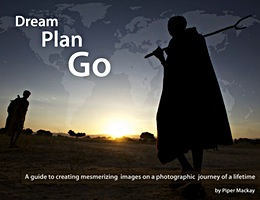Creating a stunning photograph is all about how you see and capture light. Lighting is one of the main differences between a snap shot and a great shot. I still remember being out on one of my first safaris with professional photographers where they were discussing how quickly the light went flat; I was baffled. I was looking across the savanna and the light looked fine, except that it was about 3 hours after sunrise. I was so new to photography, I really had no idea what was meant by “Golden light”. Being self-taught, it took time to even understand this basic concept, much less the idea of side-lighting, back lighting, and using light to create contrast and shadows for impact.
My understanding of light and its impact on an image really began to develop when I started focusing on tribal photography as much as my wildlife. I began following commercial and fashion photographers who were masters of light. Drawn by the dramatic images they were able to create, I went from a wildlife photographer sworn to never bother with flash, to using several speed lights and radio triggers. Subconsciously this began to have a huge impact on the way I photographed wildlife and how I used natural light. I began seeking the light in unique ways for the “Wow Factor”.
It took me years to see light in the way I see it today, which is what inspired me to create the spirit-n-light workshop. I wanted to help photographers learn to see the light and use it to create stunning photographs. Below are several sequences of images, all using natural light. Each sequence starts off with a photograph of a subject lit directly with golden light, followed by one or more images where the placement of the light created a more dramatic image.
The first image has beautiful golden light creating a wonderful photograph, but the second has the sun placed at about a 45 degree angle, side lighting or rim-lighting my subject. When scrolling through loads of images, the second photograph stands out and grabs the viewers attention.


The first image was taken in beautiful evening light with the sun coming from behind me, to beautifully light up the zebras. The second image was taken early in the morning placing the light at about a 45 degree angle from the subjects. The side-lighting allows the sun to filter through the dust particles, reflecting light on to the zebras and illuminating the entire scene. If the sun had been placed behind the zebra’s it would have been a silhouette.


The first photograph is another example of an image using beautiful early morning light. In the second image the light is coming from a 45 degree angle from the subject, glistening through the dust and creating a dramatic scene.


The beautiful afternoon sun creates a stunning image of this Kara warrior, but the images that follow have greater impact because of how the light is used to create shadows and contrast.





The next two images show how using the light changes ordinary to extraordinary.


Again, the first photograph is wonderful with the light saturating the horses coats, almost making them glow, but in the second image the light creates contrast, rim-light, shows movement, the horses breath and is clearly more dramatic.


Lastly, the first image has beautiful light and movement, but the others that follow are more powerful, leaving the viewer saying, “Wow”.




Sources to learn more about dramatic lighting;
” Seeing the Light” – ebook by Mitchel Kanashkevich ebook






Thank you so much for the information you share with us, I hope to travel with you some day.
You work is amazing! I love it!
Great article Piper and beautiful images!
Well done. Thank you for sharing
– This is all sorts of gorgeous Shannon! I love the close up of her loonikg down with all that hair framing her beautiful face. And I LOVE LOVE LOVE all those details!